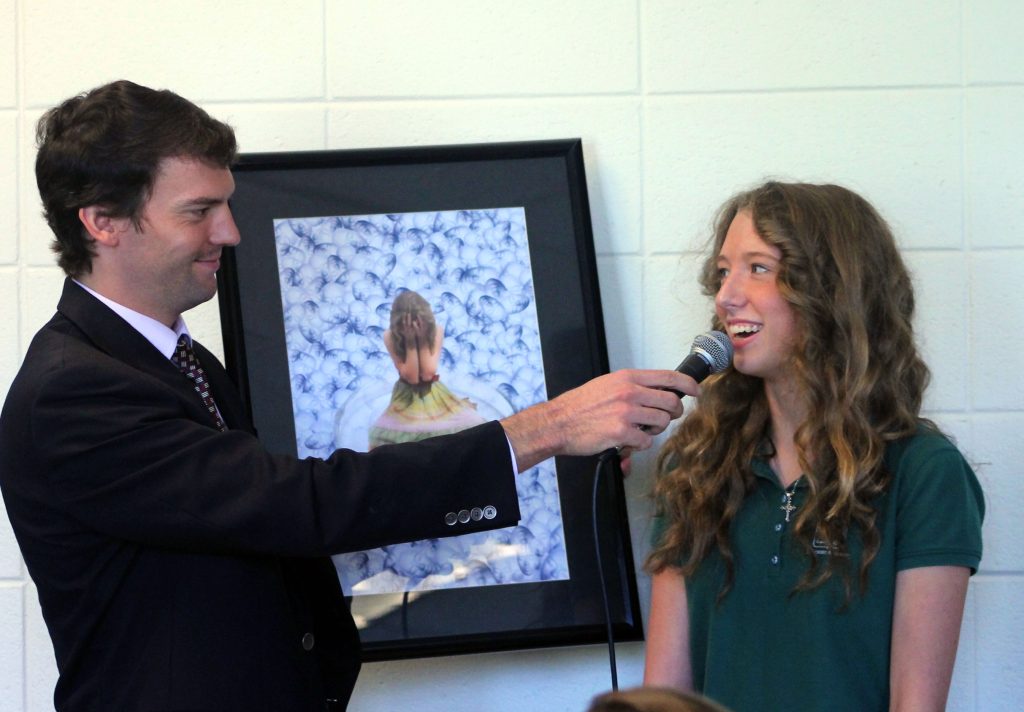Two winners of the Bioethics Global Art Competition’s Student Category met the Director of the UNESCO Chair in Bioethics and Human Rights at their high school, Pinecrest Academy, in Cumming, GA on September 6, 2013.
Dr. Alberto Garcia spoke to Juniors and Seniors about emerging issues in bioethics, and invited them to be involved and informed of worldwide efforts for the protection of human rights. Theresa Reed and John McCabe were recognized in front of their classmates for their winning artwork, contributing to the pride and celebration of Pinecrest Academy’s 20th Anniversary, which happened to coincide with Dr. Garcia’s visit.
Dr. Garcia led an interactive assembly of 108 students, addressing their questions about dignity, compassion, technology, and medicine. Dr. Garcia shared his personal experiences as a high school student, “I never imagined that I would be addressing topics that are so important to human rights – all I thought about back then was soccer.”
He challenged the students to take advantage of the subjects they were studying, and reminded them that it wouldn’t be too long before they were facing these topics in the real world, reassuring the students that these topics are relevant to people of all ages.
Theresa Reed and John Paul McCabe were met with applause from their classmates as Dr. Garcia thanked them personally for their example of leadership and for having accepted the challenge to express the effects of bioethics on future generations in a visual way with their artwork.

Reed and McCabe explained the inspiration for their artwork with classmates and faculty. They both referred to the subject of cloning, sharing their own thoughts and winning pieces. Reed’s work, “Amissio Faciem,” depicts a cloned girl’s hopelessness. Reed shared the meaning in the colors of her work, “the cloning has gotten so out of hand that her identity has been carelessly piled around her in sterile and lifeless white.”
McCabe’s winning piece, “Being Unique?” conveys the desire for uniqueness that is lost through cloning and other bioethical issues. His artwork is captured and “placed in petri dishes to symbolize the stem cell research that takes play within those dishes,” he explains in his submission artist statement.
The UNESCO Chair in Bioethics and Human Rights is proud of all the students who participated in the 2013 Bioethics Art Competition, and looks forward to meeting personally with more artists in the future.

